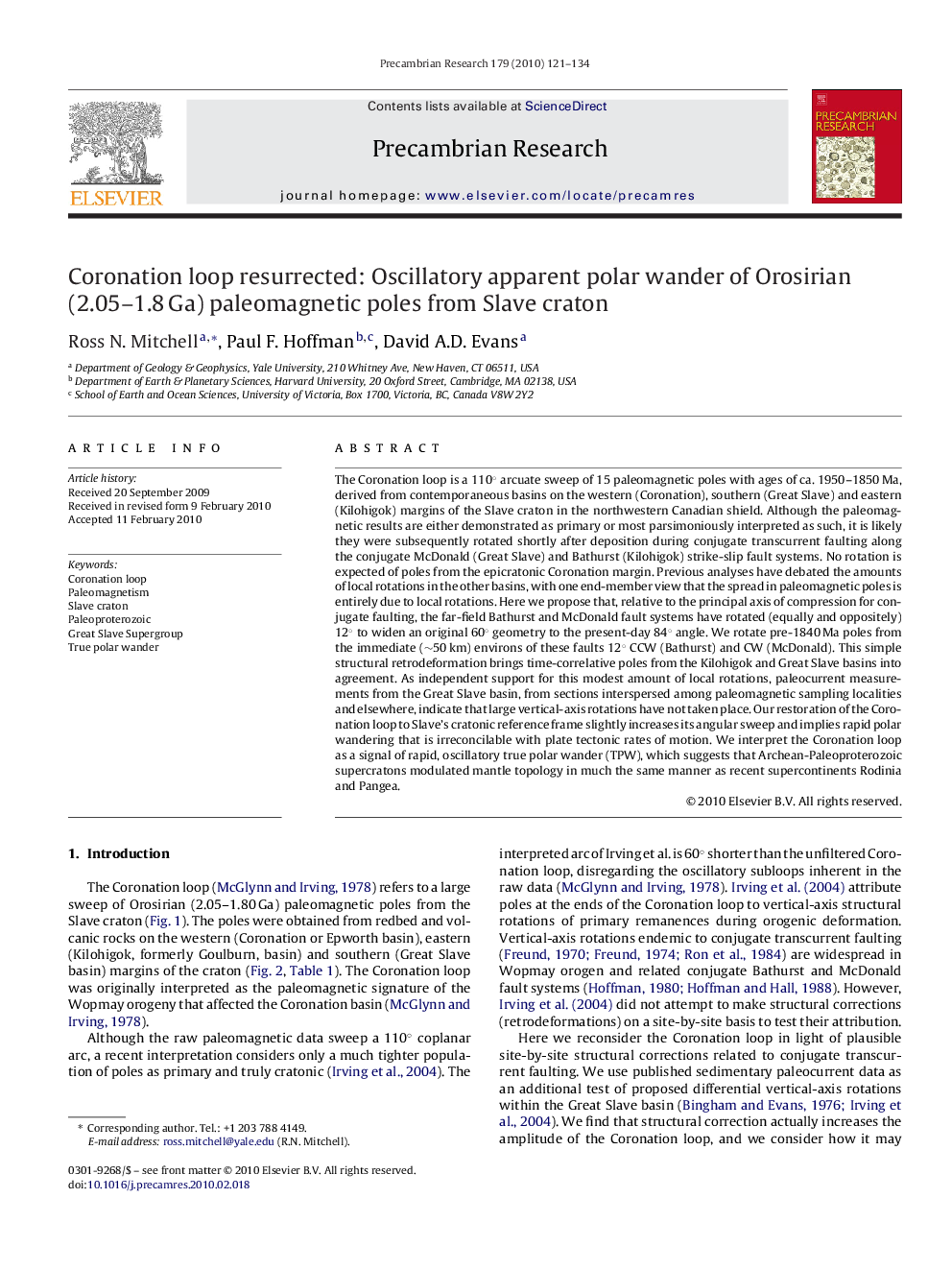| Article ID | Journal | Published Year | Pages | File Type |
|---|---|---|---|---|
| 4723934 | Precambrian Research | 2010 | 14 Pages |
Abstract
The Coronation loop is a 110° arcuate sweep of 15 paleomagnetic poles with ages of ca. 1950-1850 Ma, derived from contemporaneous basins on the western (Coronation), southern (Great Slave) and eastern (Kilohigok) margins of the Slave craton in the northwestern Canadian shield. Although the paleomagnetic results are either demonstrated as primary or most parsimoniously interpreted as such, it is likely they were subsequently rotated shortly after deposition during conjugate transcurrent faulting along the conjugate McDonald (Great Slave) and Bathurst (Kilohigok) strike-slip fault systems. No rotation is expected of poles from the epicratonic Coronation margin. Previous analyses have debated the amounts of local rotations in the other basins, with one end-member view that the spread in paleomagnetic poles is entirely due to local rotations. Here we propose that, relative to the principal axis of compression for conjugate faulting, the far-field Bathurst and McDonald fault systems have rotated (equally and oppositely) 12° to widen an original 60° geometry to the present-day 84° angle. We rotate pre-1840 Ma poles from the immediate (â¼50 km) environs of these faults 12° CCW (Bathurst) and CW (McDonald). This simple structural retrodeformation brings time-correlative poles from the Kilohigok and Great Slave basins into agreement. As independent support for this modest amount of local rotations, paleocurrent measurements from the Great Slave basin, from sections interspersed among paleomagnetic sampling localities and elsewhere, indicate that large vertical-axis rotations have not taken place. Our restoration of the Coronation loop to Slave's cratonic reference frame slightly increases its angular sweep and implies rapid polar wandering that is irreconcilable with plate tectonic rates of motion. We interpret the Coronation loop as a signal of rapid, oscillatory true polar wander (TPW), which suggests that Archean-Paleoproterozoic supercratons modulated mantle topology in much the same manner as recent supercontinents Rodinia and Pangea.
Related Topics
Physical Sciences and Engineering
Earth and Planetary Sciences
Geochemistry and Petrology
Authors
Ross N. Mitchell, Paul F. Hoffman, David A.D. Evans,
